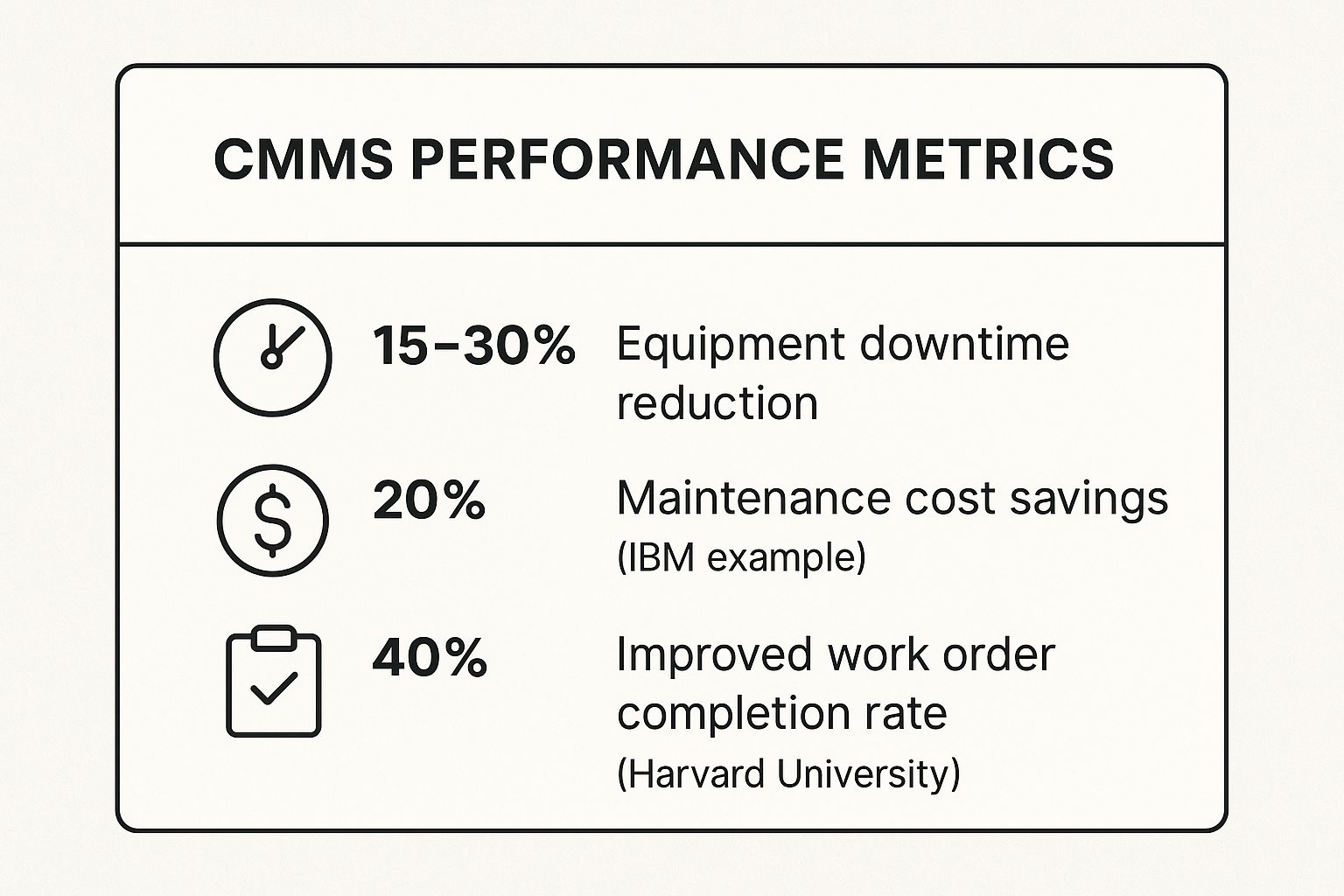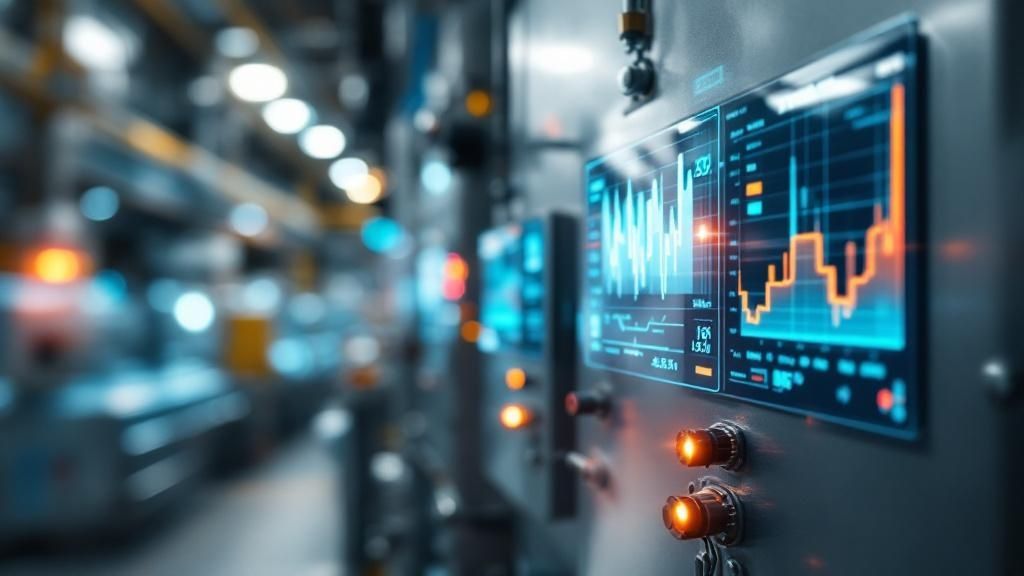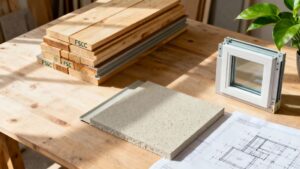In the competitive San Francisco Bay Area, managing a building is more complex than ever. From Berkeley's strict green building codes to Oakland's growing infrastructure, property managers face unique challenges. Good facility management is the key to a successful building. It ensures safety, saves money, and keeps people happy.
This guide covers nine top facility management best practices for modern buildings. Using these strategies can lower your operating costs and create better environments. Adopting essential facility management best practices for 2025 is key to staying ahead.
Whether you are a builder, remodeler, or property manager, these tips will help you succeed. We will cover everything from smart technology to working with vendors.
1. Using a Computerized Maintenance Management System (CMMS)
A Computerized Maintenance Management System (CMMS) is software that organizes all your maintenance work. It helps you track tasks, manage equipment history, and schedule regular upkeep automatically. This turns maintenance from a reactive task into a smart, planned process.
For example, a CMMS can schedule routine HVAC maintenance so you never miss a filter change. This proactive method is a core part of facility management best practices. It gives you a clear view of all operations, helping you make better decisions.
How a CMMS Helps Your Business
Many organizations have seen great results with a CMMS. For example, Harvard University uses one to manage over 600 buildings and improved its work order completion by 40%. IBM also used a CMMS to cut its maintenance costs by 20% across thousands of locations.
The infographic below shows the benefits of using a CMMS. These systems are powerful tools for improving efficiency.

Alt text: A chart showing CMMS benefits, including reduced downtime, increased productivity, and longer asset life, which are key to facility management best practices.
These numbers show that a CMMS is more than just an organizing tool. It directly boosts performance by reducing equipment downtime and making your team more productive.
2. Adopting Predictive Maintenance with IoT and Analytics
Predictive maintenance uses smart sensors and data to predict when equipment might fail. This is a step up from regular check-ups because it monitors equipment in real time. It helps you fix things before they break, avoiding costly problems.
For example, a sensor on a commercial freezer can track its temperature and vibrations. If it detects a small change, it can alert you that a part is wearing out. This is a key part of modern facility management best practices because it prevents major disruptions.

Alt text: A diagram showing how IoT sensors on equipment send data to an analytics platform, which predicts failures and schedules maintenance tasks.
Real-World Success with Predictive Maintenance
This technology is making a big difference in many industries. General Electric uses it on aircraft engines, saving airlines billions by preventing surprise failures. Amazon also uses it in its warehouses to keep its robots running nearly 100% of the time.
To get started with predictive maintenance, you should:
- Start small: Focus on your most important equipment first.
- Train your team: Make sure staff know how to use the data.
- Track your progress: Set goals to see how well it's working.
- Choose the right tools: Pick technology that works with your current systems.
Predictive maintenance helps you shift from fixing problems to preventing them, saving you time and money.
3. Integrating Workplace Management Systems (IWMS)
An Integrated Workplace Management System (IWMS) is a software platform that combines many facility functions into one place. It brings together real estate, project planning, space usage, maintenance, and sustainability tracking. This gives you a complete view of your entire property portfolio.
For example, an IWMS can link a lease renewal date to a planned office remodel. This is an advanced part of facility management best practices because it helps leaders make smart decisions with connected data. It makes your whole operation run more smoothly.
How an IWMS Drives Better Results
Big companies use IWMS to save money and improve operations. Johnson & Johnson used an IWMS to manage its 265 global sites, saving around $50 million a year by using its space more efficiently. Bank of America also uses an IWMS to manage over 4,500 locations.
An IWMS is a powerful strategic tool. When setting one up, remember to:
- Figure out what your needs are before choosing a system.
- Set clear rules for how data will be managed.
- Create a team from different departments to help with implementation.
By bringing all your facility data together, an IWMS helps you streamline work, cut costs, and align your real estate with your business goals.
4. Focusing on Energy Management and Sustainability
Energy management programs help you track and reduce energy use in your buildings. This includes things like energy audits, efficiency upgrades, and reducing waste. It helps you lower your environmental impact and your operating costs.
Following these programs is a key part of modern facility management best practices. By using sustainable building materials and tracking energy use, you can save a lot of money over time. This is especially important in the Bay Area, where energy costs are high and environmental rules are strict.

Alt text: A circular diagram illustrating the steps of a successful energy management program, a core component of facility management best practices.
The Benefits of Going Green
Saving energy has a big payoff. Google has successfully reduced energy use at its data centers by 40%. Walmart's energy programs have saved the company over $1 billion a year.
Sustainability is good for business. To start a program:
- Do an energy audit: Find where you can save the most.
- Set clear goals: Track your progress.
- Get everyone involved: Create a culture of saving energy.
- Start with easy wins: Install LED lighting to see quick results.
By focusing on energy efficiency, you can cut your utility bills, improve your company's image, and create a healthier space for everyone.
5. Improving Space Planning and Optimization
Good space planning makes sure your building's layout is as efficient as possible. It uses data to see how spaces are actually used. This helps you design flexible areas that support how people work, which boosts productivity and cuts costs.
For example, you could use sensors to see that large meeting rooms are often empty. You could then change that space into smaller rooms that people will use more. This smart approach is a key part of facility management best practices because it makes sure every square foot adds value.
How Smart Space Planning Saves Money
Top companies have shown that managing space well pays off. The company Unilever changed its office layout and cut its need for space by 50% while making employees happier. Cisco saved $15 million a year by combining four buildings into two.
These examples show how this practice leads to big savings and better workplaces. By focusing on how space is used, you can make smart decisions. Understanding designing functional and impactful spaces can help you achieve these results.
6. Planning for Emergencies and Business Continuity
Emergency and business continuity planning prepares your facility for crises like earthquakes, power outages, or other disruptions. It goes beyond fire drills to create a strong plan that keeps your core operations running. This includes figuring out risks, creating clear procedures, and having backup systems ready.
Having a robust company emergency action plan is essential. For a Bay Area office, this means having clear earthquake safety routes and communication plans. Good planning reduces downtime and protects your people and property.
Why Emergency Planning is a Smart Investment
Major companies show the value of being prepared. During Hurricane Sandy, JPMorgan Chase kept its financial services running without a problem because it had backup locations ready. Google’s data centers have multiple backup systems, which is why they almost never go down.
These examples prove that emergency planning is a vital part of strategic facility management best practices. Here are a few steps to get started:
- Assess Risks Often: Identify threats like earthquakes or power grid issues and update your plan.
- Test Your Systems: Regularly check backup generators and emergency lights.
- Keep Info Updated: Make sure emergency contact lists are current.
- Train Your Team: Teach multiple people what to do in an emergency.
With these practices, your facility can handle unexpected events and recover quickly.
7. Managing Vendors and Strategic Outsourcing
Vendor management is how you choose and work with outside service providers. It’s about building strong partnerships that deliver great results. This includes finding the right vendors, managing contracts, and checking their performance.
For example, a facility manager in Oakland might hire a local company for landscaping. By creating a clear agreement, they can set expectations for service quality. This is one of the most effective facility management best practices because it lets your team focus on their main jobs.
The Impact of Strong Vendor Partnerships
Top companies show how powerful good vendor management is. Apple partners with a global firm for its facility management and reportedly saved 25% on costs. Pfizer also hired a single provider to manage its facilities and saved around $50 million a year.
A good vendor strategy offers several benefits:
- Lower Costs: Better contracts lead to direct savings.
- Better Service: Experts can do specialized tasks to a higher standard.
- More Efficiency: Your team can focus on what they do best.
By treating vendors as partners, you can improve your operations and save money.
8. Making Data-Driven Decisions with KPIs
Data-driven decision-making means using data to guide your actions. You track key performance indicators (KPIs) to see how well things are running. This helps you move from guessing to making informed choices that improve your facility.
For example, tracking how often an HVAC unit fails helps you predict future problems. Monitoring energy use data can show you where you're wasting money. This is a core part of modern facility management best practices because it gives you clear facts to work with.
How Data Leads to Better Management
Leading companies rely on data. Amazon uses real-time data in its warehouses to keep everything running smoothly. Salesforce tracks over 50 KPIs, which has helped it improve efficiency by 30%.
To use data effectively, you should:
- Choose 5-7 important KPIs that match your business goals.
- Collect data automatically when possible.
- Use dashboards to see your data clearly.
- Review data regularly and create plans to improve.
The ideas behind data-driven project management can also help facility managers. Using data turns information into a tool that helps you get better over time.
9. Using Smart Building and Digital Workplace Technologies
A digital workplace uses smart technologies like sensors and automated systems to create better buildings. This approach uses data to improve the experience for people inside, make the building run better, and streamline operations. It connects systems like heating and lighting into one smart network.
For example, smart sensors can tell when a room is empty and automatically turn off the lights and adjust the heat. This is a key goal of modern facility management best practices. It turns buildings into smart environments that adapt to people's needs.
The Power of a Smart Building
Top companies are already using this technology. The Edge in Amsterdam is called the world's smartest building and uses 28,000 sensors to manage everything. In the U.S., Salesforce Tower in San Francisco uses a smart system to control its HVAC, cutting energy costs by about 30%.
To bring smart technology into your building, follow these steps:
- Start with a small project: Test new tech in one area first.
- Focus on the user: Choose systems that are easy for people to use.
- Make it secure: Protect your network of connected devices.
- Train everyone: Teach your staff and building occupants how to use the new tools.
Comparing Facility Management Best Practices
| Best Practice | Difficulty to Start 🔄 | Resources Needed ⚡ | Expected Results 📊 | Best For 💡 | Key Advantage ⭐ |
|---|---|---|---|---|---|
| CMMS | Medium | Software, staff training | 15-30% less downtime | Centralized maintenance | Better productivity |
| Predictive Maintenance | Hard | Sensors, skilled staff | Up to 50% less downtime | Critical equipment | Prevents failures |
| IWMS | Hard | Software licenses | 15-30% better space use | Large organizations | One unified system |
| Energy Management | Medium | Audits, system upgrades | 15-30% lower energy bills | Reducing carbon footprint | Cost savings, compliance |
| Space Planning | Medium | Tech, new furniture | 20-40% lower real estate costs | Offices with hybrid work | Cost savings, happy staff |
| Emergency Planning | Medium | Backup systems, drills | Less downtime and risk | Resilience against shocks | Safety and fast recovery |
| Vendor Management | Medium | Contract management | 15-25% lower costs | Outsourced services | Savings, expert help |
| Data-Driven Decisions | Medium | Software tools, training | 20-30% more efficiency | Evidence-based management | Smart, objective choices |
| Smart Building Tech | Hard | Sensors, AI systems | 15-25% happier occupants | Modern workplaces | Comfort, energy savings |
FAQs About Facility Management Best Practices
1. What is the most important facility management best practice to start with?
For most buildings, implementing a Computerized Maintenance Management System (CMMS) is the best first step. It helps you organize and track all maintenance tasks, creating a strong foundation for all other improvements.
2. How can small businesses in the Bay Area afford these technologies?
Many of these technologies, especially CMMS software, are now available as affordable subscription services (SaaS). Start with a small pilot project, like monitoring one key piece of equipment, to prove its value before expanding.
3. How do these practices help with California's building codes?
Practices like energy management and using sustainable materials directly help you meet California's strict Title 24 energy codes. A CMMS can also help you track and document your compliance activities for easier reporting.
4. Can predictive maintenance really predict failures?
Yes, it can. By using sensors to monitor equipment for tiny changes in vibration, temperature, or energy use, analytics can spot patterns that show a part is about to fail. According to a study by Deloitte, this can reduce breakdowns by up to 50%.
5. How do I choose the right vendors for my Berkeley or Oakland facility?
Look for local vendors with a strong track record and positive reviews from other Bay Area businesses. Ask for references, and make sure they understand local regulations, like Berkeley's green building ordinances.
Your Partner in Building Excellence
Good facility management today is about being proactive. It mixes technology, sustainability, and smart planning to create buildings that are safe, efficient, and great places to be. The facility management best practices in this guide show you how to get there.
By using tools like a CMMS and smart sensors, you can stop reacting to problems and start preventing them. This saves money and makes your equipment last longer. In the Bay Area, focusing on sustainability isn't just a trend—it's essential for cutting costs and meeting local standards.
A great facility management plan connects every part of a building's life. It comes down to a few key ideas:
- Use Technology: Use software to automate tasks and get clear data.
- Be Proactive: Move from a "break-fix" approach to a predictive one.
- Focus on Sustainability: Save on energy and meet California's green codes.
- Build Strong Partnerships: Work with trusted local suppliers who understand your goals.
Putting these facility management best practices into action is a commitment to quality. It takes planning, the right tools, and good partners. By following these steps, you are not just managing a building; you are creating a valuable asset that will last for years.
Ready to upgrade your building with materials that support modern management goals? The experts at Truitt & White have supplied Bay Area builders, architects, and property managers with quality building products for nearly 80 years. Visit our Berkeley showroom for expert advice.









